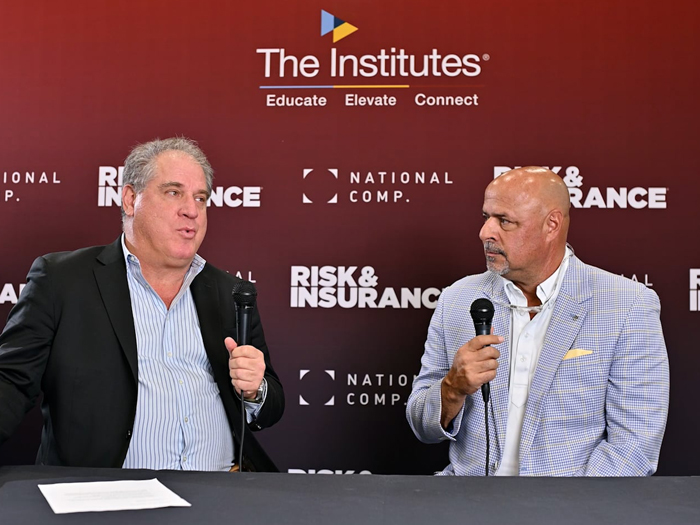Expert Perspective: Effective E-Prescribing Protects Patient Safety at Point of Care

Earlier this year, the U.S. reached a tipping point in the fight against the opioid epidemic, with more than half of all states requiring the use of electronic prescribing for opioids, controlled substances or all prescriptions.

Hollie Lamboy, VP of Product Development, myMatrixx
At the federal level, the SUPPORT for Patients and Communities Act, signed into law in October 2018, requires the use of electronic prescribing for all controlled substances under Medicare Part D by January 1, 2021. That includes buprenorphine, codeine, fentanyl, hydrocodone, oxycodone, hydromorphone, and morphine.
Providers wrote a whopping 115.16 million e-prescriptions for controlled substances in 2018 — a figure that will continue to rise sharply. That means the safety and efficacy of e-prescribing practices has never been more crucial to the outcome of workers’ comp claims, and the speed with which injured workers can get back to work and back to their lives.
Risk & Insurance® spoke with Hollie Lamboy, VP of Product Development at myMatrixx, to discuss the impact of e-prescribing on workers’ comp outcomes, and how having a way to message providers at the point-of-care can improve injured worker care and safety, help reduce the risk of opioid overuse, and can help keep claim costs in check.
How do prescribing practices impact workers’ compensation outcomes?
In the world of workers’ comp, a patient has an injury and the ultimate goal is to get them healthy, get them the right treatment, get them the right medication so that they can get back to work.
The better you can communicate with the physician, the patient and the treatment [team] that’s charged with getting them back to work and effectively communicating to the pharmacy at the same time, the better the outcome for the injured worker.
That’s the ultimate goal here — how do we maximize and improve that circle of care and that circle of communication between the patient, the physician and the pharmacy?
What are the common pitfalls of traditional prescribing practices?
Think about how a patient may see several physicians. Each given physician may or may not be aware of what that patient is being prescribed from those other physicians.
Part of the e-prescribing technology is messaging information that’s appropriate as it relates to the patient’s treatment. For example, having the ability to check a medication to see if it’s on formulary and providing clinical messaging to the prescriber.
How effective is this kind of messaging at keeping workers safer?
One of the major pain points in the workers’ comp industry is the excessive use of opioids and pain meds. The ability to provide messaging to the prescriber at the point of care — when the patient is sitting in the doctor’s office — and messaging things like, “This patient has already had an opioid,” or “There’s a drug-to-drug interaction,” really does help the prescriber make the right decisions on the patient’s treatment.
That’s why the type of information that you’re passing along to the prescriber at the point of care is key. Clinical related messaging to the treating provider such as, “this patient is already taking an opioid or multiple related drugs,” brings attention to that type of activity, thus ultimately contributing to ensuring the appropriate treatment plan while the patient is in the office.
“If you think about it, physician providers see hundreds and hundreds of patients. So the more we can ensure their ease of use in obtaining the right information, it ultimately affects how effective the treatment is for that injured worker.” — Hollie Lamboy, VP of Product Development, myMatrixx
If the doctor understands there’s a risk of overuse or concern with patient safety, they may want to change the treatment for that injured worker to an alternative that’s better aligned.
The goal is protecting the patient’s safety — reducing the risk of addiction or overuse of opioids, which ultimately would prolong the patient’s claim and keep them away from work.
Why is the timing so important?
Providing that type of messaging at the point of care and not after the fact is very effective. At that given point in time, the physician is still able to [have a face-to-face conversation with the injured worker] as in, “Well, I didn’t know that you were taking this medication … help me understand what you’re taking this medication for.”
That’s the true value of that messaging — the ability for the doctor to have those conversations at the point of care, not after the fact.
How else can effective messaging support employers’ and payers’ medical management efforts?
The ability to check, at the point of care, to see if a drug is on or off formulary could also improve care and potentially minimize costs … because if the doctor is adhering to the plan for that given payer, that contributes to making the best treatment choices for the patients and minimizing unnecessary costs.
In addition, effective messaging at the point of care can reduce authorization requests and minimize billing inefficiencies as well.
Let’s say a pharmacy is processing a prescription and it’s rejected because it was outside of the formulary and requires authorization before being dispensed to the injured worker. In an effort to get the patient the medication in a timely manner, the pharmacy may attempt other billing methods such as third-party billers, which in turn is a higher cost. By having the ability to check the formulary minimizes rejection at the point-of-sale.
Are doctors receptive to this kind of messaging?
It’s information that they otherwise wouldn’t have available. So the fact that they’re able to use this channel to get more information, it makes their lives a lot easier and gives the right information at the right time so that they can ensure the injured worker is getting the treatment they need.
Also, striving to learn more about the experience of the provider. How do we evolve even more to make sure that we’re making the experience for the provider meaningful and helpful towards the patient’s treatment?
If you think about it, physician providers see hundreds and hundreds of patients. So the more we can ensure their ease of use in obtaining the right information, it ultimately affects how effective the treatment is for that injured worker.
The patient’s safety is what we’re driving for — making sure that they’re getting the right treatment so that they can get back to work. Having this level of communication is a valuable part of an overall strategy for driving positive outcomes and managing workers’ comp claims. &








